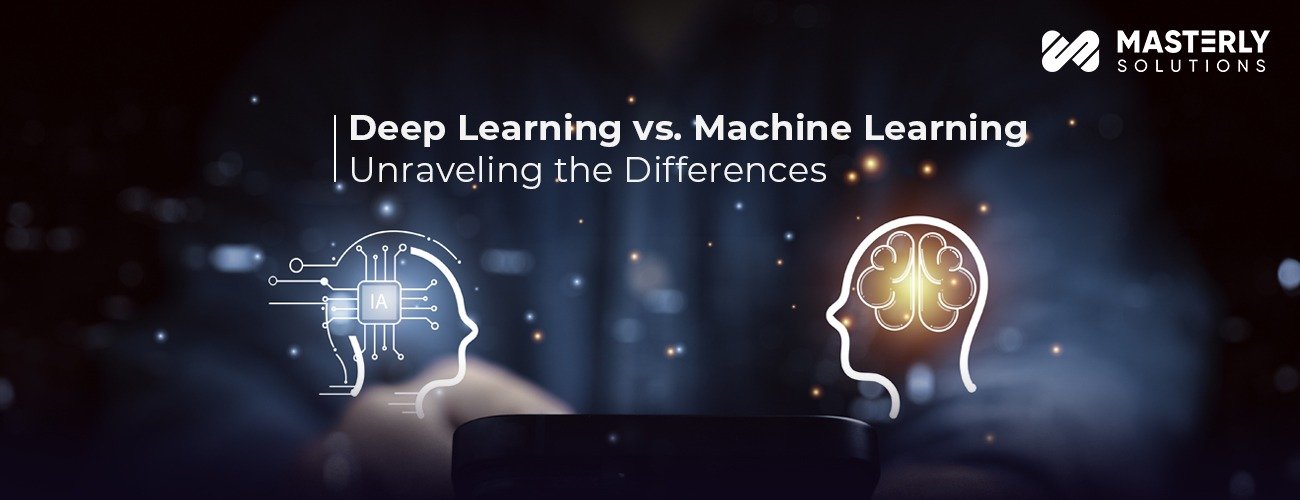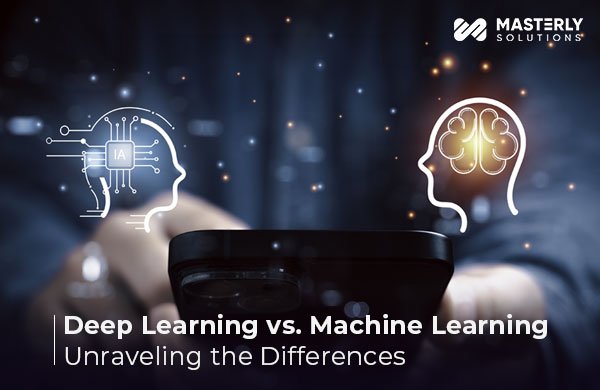
In the ever-evolving landscape of artificial intelligence (AI), two terms frequently emerge at the forefront of technological innovation: Deep Learning vs. Machine Learning. While they are often used interchangeably, significant distinctions set them apart. This blog aims to demystify these differences, delving into the fundamentals, applications, and future prospects of DL and ML.
Understanding the Fundamentals
Fundamentally, Machine Learning, a subset of AI, empowers machines to learn from data and make decisions with minimal human intervention. It encompasses a broad range of techniques and algorithms, from simple linear regression to complex neural networks. Deep Learning, on the other hand, is a subset of ML that uses layered neural networks to simulate human decision-making. The depth of these models, varying from a few layers to hundreds, facilitates the intricate processing of large volumes of data.
Key Differences Between DL and ML
The primary distinction between DL and ML lies in how data is processed and interpreted. Traditional ML algorithms lean on structured data and feature engineering for learning, while DL algorithms shine in autonomously recognizing and learning from inherent patterns in the data. This makes them especially effective for handling unstructured data sources such as images and audio.
Neural Networks in Deep Learning
DL’s backbone is the neural network, a structure inspired by the human brain’s architecture. These networks consist of interconnected nodes or neurons that process input data layer by layer. The complex architecture and depth of these networks empower deep learning models to understand intricate patterns in extensive datasets, a process often more automated and sophisticated than conventional ML approaches.
Applications and Examples
The applications of ML and DL span a wide array of industries, from deep learning in healthcare, where algorithms can predict diseases and assist in personalized medicine, to machine learning in finance, optimizing investment strategies and detecting fraudulent activities.
Deep Learning Examples
Image Recognition: DL techniques excel in identifying objects within images, a feature widely used in security systems and medical diagnostics.
Natural Language Processing (NLP): From chatbots to translation services, DL models have significantly advanced the understanding and generation of human language.
Machine Learning Applications
Predictive Analytics: ML algorithms analyze historical data to forecast future trends, valuable in stock market predictions or customer behavior analytics.
Recommender Systems: Used by streaming and e-commerce platforms, these systems personalize user experiences by suggesting products or content.
AI vs. ML vs. DL
While AI is the broadest concept, referring to machines capable of performing tasks that typically require human intelligence, ML and DL represent increasingly specialized and advanced subsets. AI encompasses everything from simple rule-based algorithms to complex neural networks, with ML focusing on systems that learn from data and DL diving deeper into algorithms inspired by the human brain.
The Future of Machine Learning and Deep Learning
As we look towards the future of machine learning and deep learning, it’s clear that these technologies will continue to shape our digital landscape. Advancements in neural networks and algorithms will drive innovation across sectors, from enhancing AI innovations in technology to addressing critical challenges in healthcare and the environment.
In the machine learning trends in the USA and deep learning advancements in the Gulf, we see a global commitment to pushing the boundaries of what these powerful tools can achieve. The ongoing research and development in these fields promise to unlock new potentials and opportunities, making it an exciting time for both practitioners and enthusiasts.
Conclusion
The distinctions between deep learning and machine learning are nuanced yet significant, each with its strengths and optimal use cases. As we unravel these differences, it becomes evident that the convergence of DL and ML is driving the future of seamless software experiences, transforming industries, and redefining what’s possible with AI. Dive into the complex realm of AI, whether examining the benefits of deep learning over machine learning, exploring methods for image recognition in deep learning, or contrasting machine learning with deep learning in data analysis. The journey into AI’s depths is both intricate and fulfilling. As we delve deeper into these domains, the potential of AI to revolutionize our world remains undiminished, pointing towards a future where technology and human ingenuity converge in unprecedented ways.
